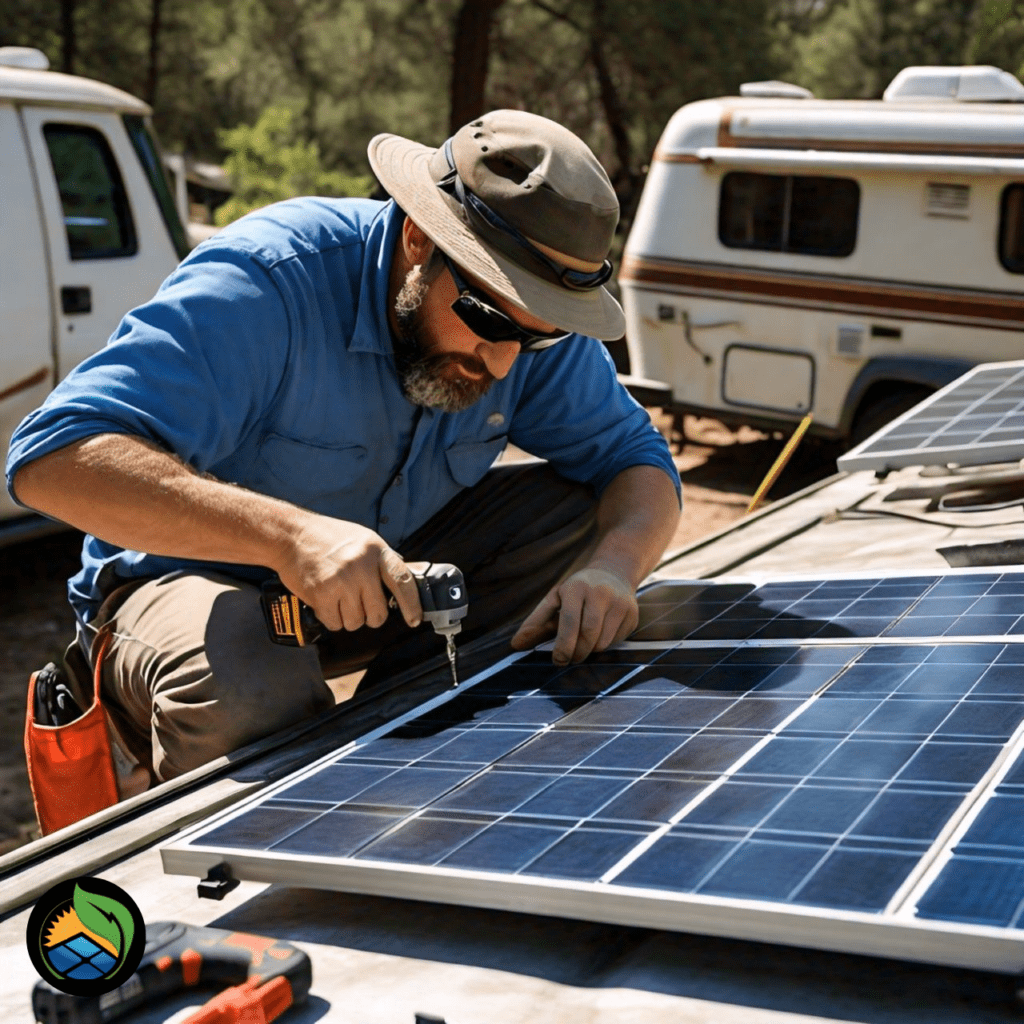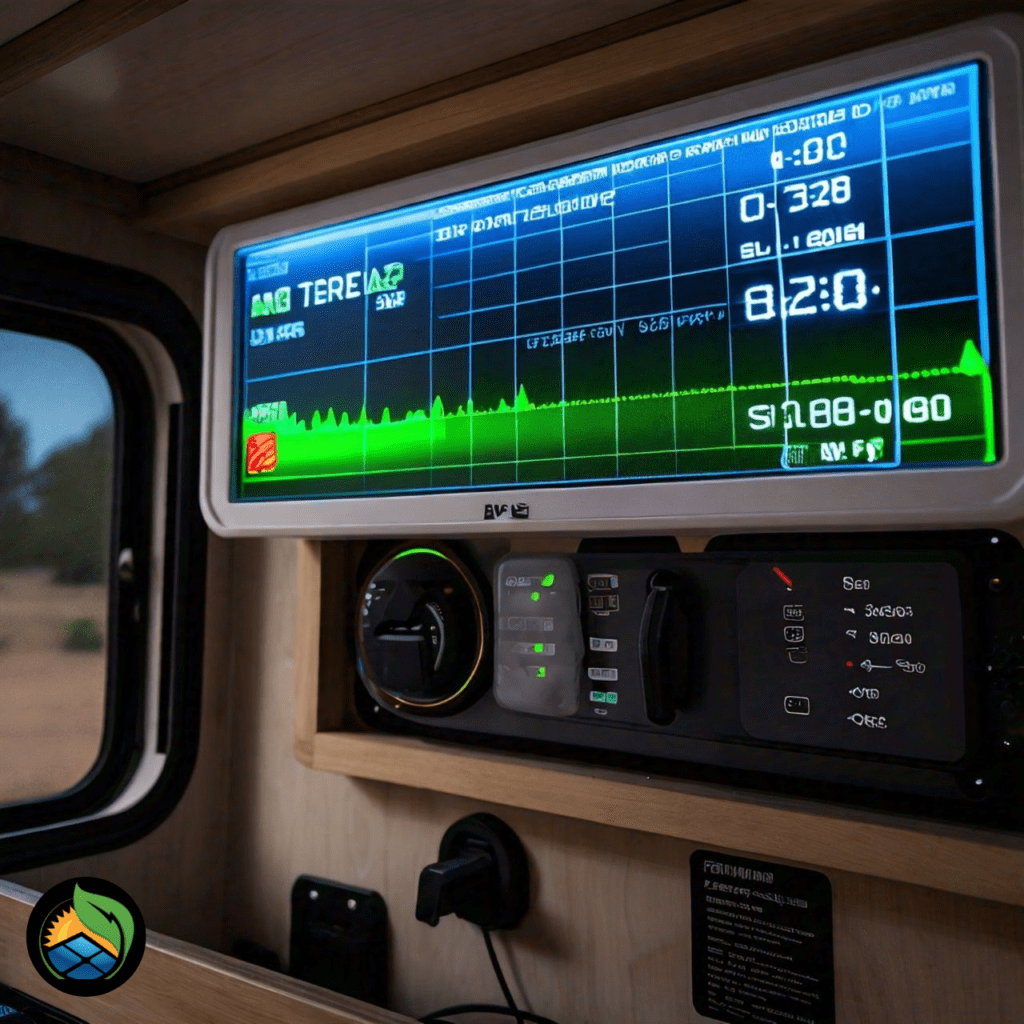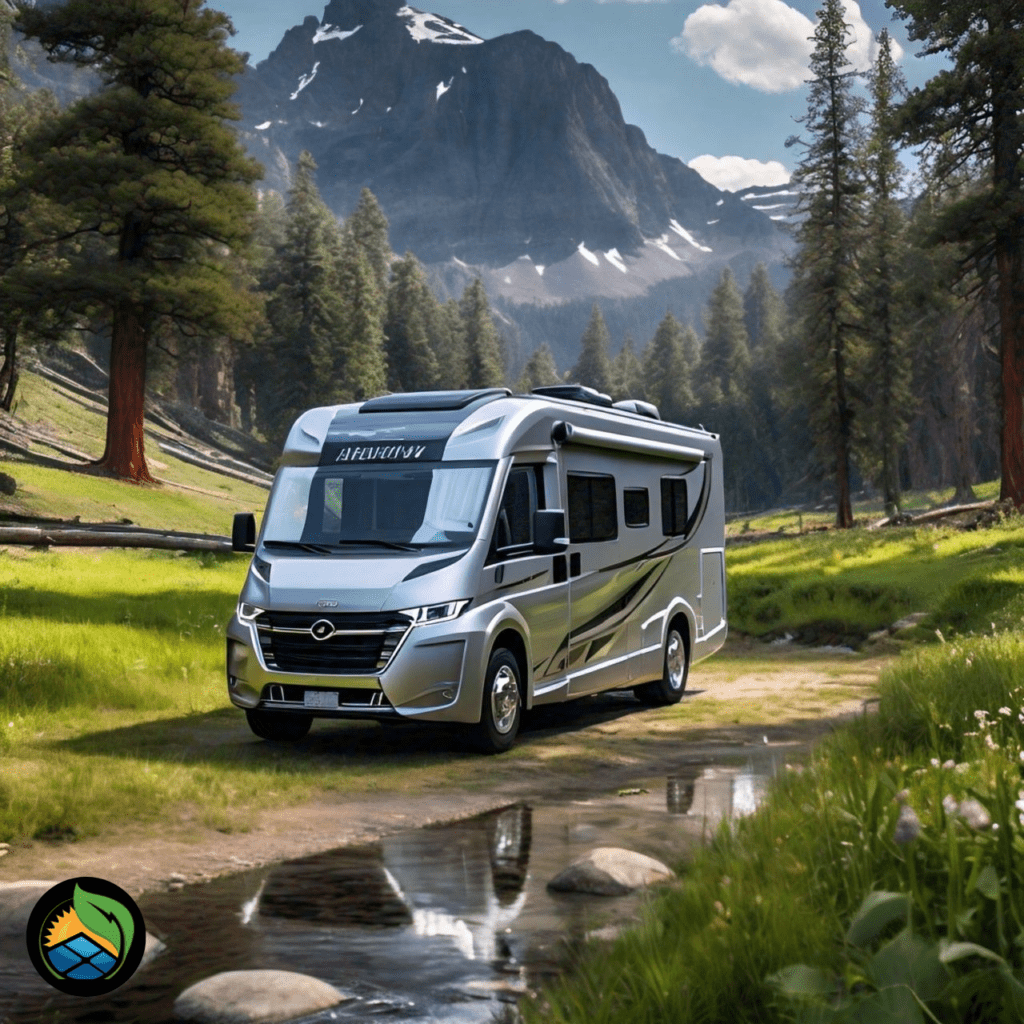RV air conditioners are essential for staying cool and comfortable on your travels, but they can be power-hungry appliances, especially when you’re off the grid. So, how much solar power do you need to run your RV air conditioner efficiently?
In this comprehensive guide, we’ll explore the solar power requirements for running your RV air conditioner, based on its size and your energy needs. We’ll also discuss factors affecting solar power requirements, how to size your solar power system, and tips for optimizing energy efficiency in your RV.
Whether you have a small, medium, or large RV air conditioner, we’ll help you determine the right solar power system for your needs, so you can enjoy the comfort of air conditioning wherever your travels take you, without relying on grid power.
Solar Power Requirements Based on AC Size:

Small RV AC Units (Under 10,000 BTU)
Small RV air conditioners, typically under 10,000 BTU, require less power compared to larger units. However, even these smaller units can draw a significant amount of power. To run a small RV air conditioner, you’ll need a solar power system capable of producing around 400-800 watts of power.
Medium RV AC Units (10,000 – 15,000 BTU)
Medium-sized RV air conditioners, ranging from 10,000 to 15,000 BTU, are the most common. They provide ample cooling power but require a substantial amount of energy. For a medium-sized RV air conditioner, you’ll need a solar power system capable of producing around 800-1500 watts of power.
Large RV AC Units (Over 15,000 BTU)
Large RV air conditioners, over 15,000 BTU, are powerful units designed for larger RVs or for those traveling in extremely hot climates. These units demand the most energy and necessitate careful consideration when planning a solar power system. To run a large RV air conditioner, you’ll need a solar power system capable of producing over 1500 watts of power.
Determining Your RV’s Energy Needs
To determine how much solar power you need to run your RV air conditioner, you must first calculate your RV’s total energy consumption. This includes not only the energy required to run your air conditioner but also other appliances and devices you’ll be using. Start by making a list of all the appliances and devices in your RV, along with their power consumption in watts.
Factors Affecting Solar Power Requirements
Several factors affect the solar power requirements for running your RV air conditioner efficiently.

These include:
Climate and weather conditions: Hotter climates require more energy to keep your RV cool.
Insulation and ventilation of your RV: Well-insulated and ventilated RVs require less energy to maintain a comfortable temperature.
Frequency and duration of AC usage: The more you use your air conditioner and the longer you use it for, the more energy you’ll need.
Sizing Your Solar Power System for RV AC

Once you’ve determined your RV’s energy needs and considered the factors affecting solar power requirements, it’s time to size your solar power system accordingly. Here’s how to do it:
Step 1: Calculate your total energy consumption
Start by calculating your RV’s total energy consumption in watt-hours (Wh) per day. This includes the energy consumption of all your appliances and devices, as well as any additional energy you’ll need for charging batteries and other uses.
Step 2: Determine your average daily solar insolation
Next, determine the average amount of sunlight you can expect to receive in your location. This will vary depending on factors such as your location, the time of year, and any obstructions that may block sunlight.
Step 3: Size your solar power system
Once you have your total energy consumption and average daily solar insolation, you can calculate the size of your solar power system. Use the following formula:
Solar power system size (in watts) = Total energy consumption (in watt-hours) / Average daily solar insolation (in hours)
For example, if your total energy consumption is 2000 Wh per day and your average daily solar insolation is 5 hours, your solar power system size would be:
Solar power system size = 2000 Wh / 5 hours = 400 watts
Minimum Solar Panel Array Size
The size of your solar panel array depends on several factors, including the size of your air conditioner, your energy needs, and your available roof space. As a general rule of thumb, you’ll need around 100 watts of solar panels per 100 amp-hours of battery capacity.
Choosing the Right Solar Panels
When selecting solar panels for your RV, consider factors such as efficiency, durability, and available space on your RV’s roof. Monocrystalline solar panels are generally more efficient and durable than polycrystalline panels, making them a popular choice for RVers.
Optimizing Energy Efficiency in Your RV
To maximize the efficiency of your solar power system, it’s essential to minimize energy wastage wherever possible. This includes using energy-efficient appliances, improving insulation, and reducing phantom loads. Here are some tips for optimizing energy efficiency in your RV:
Use LED lights instead of incandescent bulbs
Invest in energy-efficient appliances
Improve insulation in your RV
Use window coverings to block out heat
Solar Power System Maintenance
Regular maintenance is crucial to ensure that your solar power system operates efficiently and reliably. This includes cleaning your solar panels, checking for any damage, and inspecting your system’s components. Here are some maintenance tasks you should perform regularly:
Clean your solar panels regularly to remove dirt, dust, and debris
Check for any damage to your solar panels, wiring, or other components
Inspect your batteries for signs of corrosion or damage
Test your system regularly to ensure that it’s working correctly
Solar Charge Controllers Explained
A solar charge controller regulates the voltage and current coming from your solar panels to ensure that your batteries are charged safely and efficiently. There are two main types of solar charge controllers:
PWM (Pulse Width Modulation) controllers
MPPT (Maximum Power Point Tracking) controllers
PWM controllers are simpler and less expensive, but they are less efficient than MPPT controllers.
MPPT controllers are more efficient and can extract more power from your solar panels, making them a better choice for larger solar power systems.
Selecting Your Inverter
An inverter converts the DC power generated by your solar panels into AC power that can be used to run your RV appliances. There are two main types of inverters:
Modified sine wave inverters
Pure sine wave inverters
Modified sine wave inverters are less expensive, but they can cause issues with some sensitive electronics. Pure sine wave inverters are more expensive, but they produce a cleaner and more stable AC power output, making them a better choice for most RV applications.
Wiring and Installation Tips
Proper wiring and installation are essential for the safe and efficient operation of your solar power system. Be sure to follow the manufacturer’s instructions and consider hiring a professional if you’re not confident in your DIY skills. Here are some wiring and installation tips to keep in mind:
Use the correct gauge of wire for your system
Install fuses or circuit breakers to protect your system from overloads
Keep your wiring neat and organized to avoid damage and interference
Seal any holes or penetrations in your RV’s roof to prevent leaks
Alternatives to RV Air Conditioning
In addition to traditional air conditioning, there are several alternative cooling options available for RVers, including:
Swamp coolers: Swamp coolers use evaporation to cool the air and can be an energy-efficient alternative to traditional air conditioning.
Ventilation fans: Roof-mounted ventilation fans can help to exhaust hot air from your RV and bring in cool air from outside.
Reflective window coverings: Reflective window coverings can help to block out heat from the sun and keep your RV cooler in hot weather.
Adding Portable Solar Panels for Flexibility
In addition to a fixed solar panel array, you may want to consider adding portable solar panels to your RV setup. These can be positioned to capture the maximum amount of sunlight throughout the day and provide additional flexibility. Portable solar panels are especially useful if you need to park your RV in the shade or if you need to move your panels to follow the sun throughout the day.
Budgeting for Your Solar RV Conversion
Converting your RV to run on solar power can be a significant investment, but it can also save you money in the long run. Be sure to budget for all the necessary components, including solar panels, batteries, charge controllers, and inverters. Here are some costs to consider:
Solar panels: The cost of solar panels will depend on their size, efficiency, and quality. Expect to pay anywhere from $100 to $500 per panel.
Batteries: Deep-cycle batteries are the best choice for solar power systems and can cost anywhere from $50 to $300 each.
Charge controllers: Charge controllers cost between $50 and $200, depending on their size and features.
Inverters: Inverters can cost anywhere from $100 to $1000 or more, depending on their size and quality.
Conclusion
Determining how much solar power you need to run your RV air conditioner efficiently requires careful consideration of your energy needs, the size of your air conditioner, and the specific conditions of your travels. By properly sizing and maintaining your solar power system, you can enjoy the comfort of air conditioning wherever your travels take you, without relying on grid power.
